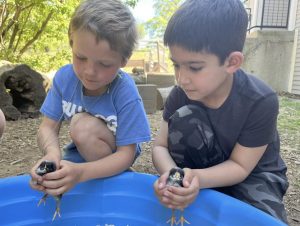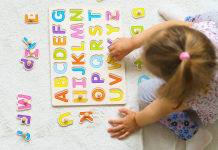I’ve been the Lower School Director (preschool through Grade 4) at Berwick Academy for 19 years. My experience teaches me that instructing the ‘whole person’ positively impacts their social and emotional wellbeing. Since the pandemic, focusing on Social-Emotional Learning (SEL) is more important than ever. In preschool, kindergarten, and beyond, SEL promotes individual growth and nurtures compassionate citizens. Plus, it develops a trusting classroom community where students are comfortable going outside of their comfort zones. Learning to support social-emotional learning at home and in the classroom is an integral way we can help our children develop into their best selves.
5 Ways to Support SEL at Home
- Try yoga and mindfulness: Taking time for yoga and mindfulness encourages young children to understand how and when they need time for self-reflection. This is an important skill for children to obtain as they grow. At Berwick, we employ Yoga 4 Classrooms routinely in pre-K through Grade 4.
- Read books with a focus on diversity and inclusion: Build empathy and promote positive conversations by choosing age-appropriate books that tackle themes of diversity and inclusion. Check out this resource for some initial book ideas or even these options from some of Seacoast Moms’ writers. If you’re interested in learning more about our school’s work around these topics, please connect with us!
- Play outdoors and explore: Getting outdoors encourages coordination, creative thinking, and collaboration. Whether it’s hiking, climbing, or using natural tools and items in free play, nature is an incredible classroom. Outdoor activities where children can push themselves physically build confidence, bodily awareness, and promote a healthy lifestyle. This spring, our Lower School teachers worked with Anne Stires to learn more about nature’s connection to SEL.

- Organize family game nights: Whether it’s a board game or kicking around a soccer ball, playing games with children teaches them so much! It helps them to understand rules, structure, how to focus, and to be a good teammate and opponent. Through games, families can problem-solve, overcome challenges, and learn to cope during emotionally-charged moments.
- Create and/or discuss art: When a child makes and discusses art, it encourages conversation about emotions. It nurtures a child’s ability to express feelings and ask questions in meaningful ways. Offering a choice between variety of art materials is also a great way to get children engaged. Our Lower School art teacher and counselor utilize the colors and feelings represented in the Zones of Regulation to build understanding around emotions.
 Social-emotional learning is an essential part of childhood development.
Social-emotional learning is an essential part of childhood development.
We want kids to be resilient, brave, and compassionate as they face the world around them. Using similar language and ideas at home helps to connect the SEL development that occurs in school. Plus, educators and parents working together always has an amazing impact on children.
Joel Hawes
Lower School Director
Berwick Academy
Berwick Academy, situated on an 80-acre campus just over one hour north of Boston, serves 565 students, Pre-Kindergarten through Grade 12, from Massachusetts, New Hampshire, and Maine. Deeply committed to its mission of promoting virtue and useful knowledge, Berwick Academy empowers students to be creative and bold. Berwick strives to graduate alumni who shape their own learning, take risks, ask thoughtful questions, and come to understand and celebrate their authentic selves.










